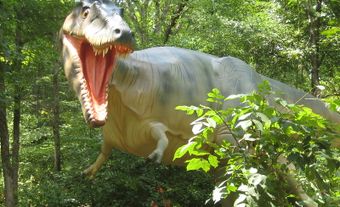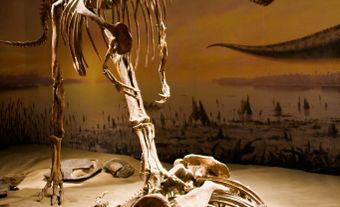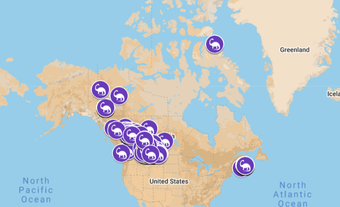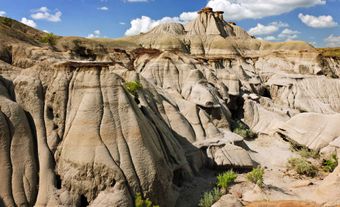Members of the Central Asiatic Expedition, led by the American Museum of Natural History, first recognized dinosaur eggs in Mongolia in the 1920s. Since then, paleontologists have discovered fossilized remains of dinosaur eggs at over 200 locations worldwide. These locations include sites in Africa, China, Europe, India, Korea, and the Americas. The first dinosaur eggs from North America were discovered in Montana in the late 1970s. In Canada, dinosaur eggshell fragments were initially found in the early 1980s. Complete dinosaur eggs were discovered in 1987 at a site in southern Alberta known as Devil’s Coulee.
Devil's Coulee

Devil's Coulee is unique in Canada in that it preserves thousands of fossilized eggshell fragments from the Late Cretaceous period (circa 100–65 million years ago). There are also numerous clutches of dinosaur eggs, some containing embryos. Eggshells are so abundant at the site that in some places the ground is covered in fossil eggshell and it is impossible to take a step without walking on it. Several types of eggshell are found here. They include those of small non-avian theropods, hadrosaurs, birds, crocodiles and turtles. Egg clutches or complete eggs are known for only two types of dinosaurs. These types are lambeosaurs, or hollow-crested hadrosaurs, and Troodontids, a family of small meat-eating dinosaurs.
Egg Clutches

The most common egg clutches preserved at the site are those of lambeosaurs, as identified by the presence of embryonic bones. Many of these egg clutches are found in close proximity to each other and occur through several different rock layers. This indicates that these dinosaurs built their nests in the same area over a long time span and possibly nested in colonies. The largest clutch from Devil’s Coulee contains 16 spherical eggs, each about the size of a soccer ball. Based on the study of the embryos within the eggs, the embryos are estimated to have been approximately 60 cm long at hatching. The embryos had well-developed bones. They sharpened their teeth by grinding them while still in the egg. This suggests that these dinosaurs actively foraged immediately after hatching.
Did you know?
No eggs or eggshell fragments have been discovered for any tyrannosaurid, such as Tyrannosaurus and Albertosaurus. Still, tyrannosaurids are presumed to have laid eggs. A recent study suggested that tyrannosaurs may have laid soft-shelled eggs, like many lizards and turtles. Soft-shelled eggs are less likely to fossilize than hard-shelled eggs.
The other type of dinosaur egg clutch known from Devil’s Coulee belongs to a small meat-eating dinosaur called Troodon, identified based on similarity to eggs from Montana that contain Troodon embryos. So far, four Troodon clutches have been discovered at Devil’s Coulee. However, none contain embryonic bones. These clutches contain elongate eggs that are buried subvertically, laid in pairs, and arranged in a circular cluster. Based on the discovery in Montana of a Troodon egg clutch closely associated with a partial adult skeleton, palaeontologists believe that this dinosaur sat on its nest to incubate its eggs, like modern birds.
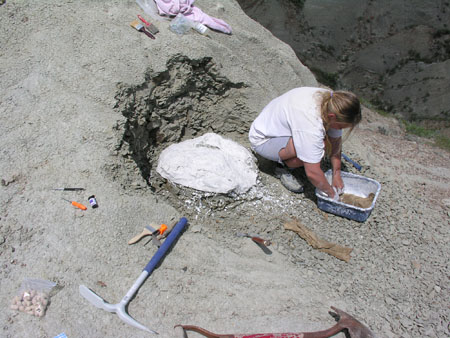

 Share on Facebook
Share on Facebook Share on X
Share on X Share by Email
Share by Email Share on Google Classroom
Share on Google Classroom
